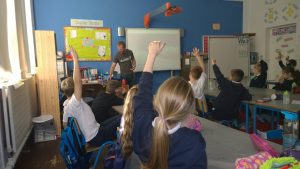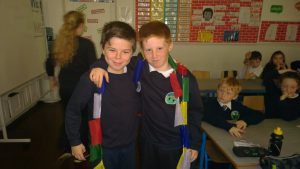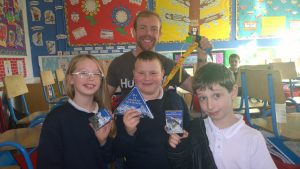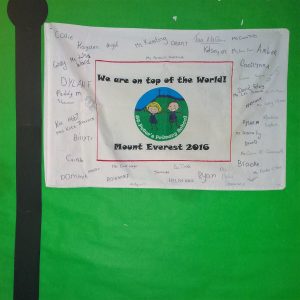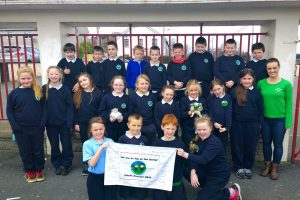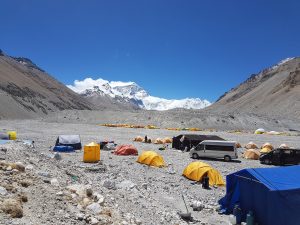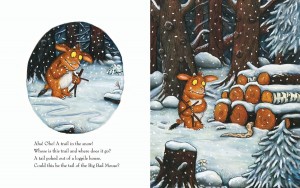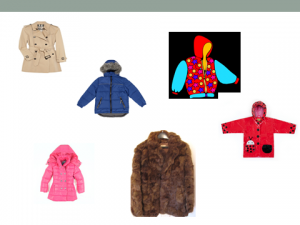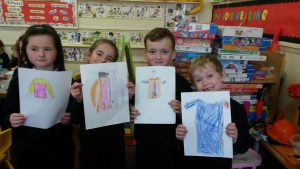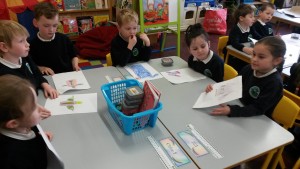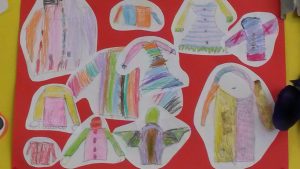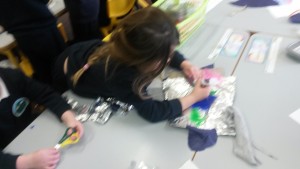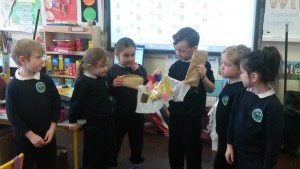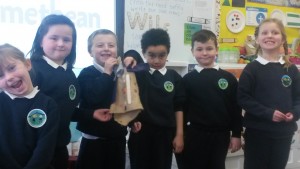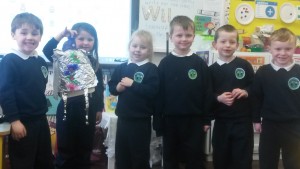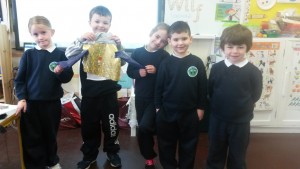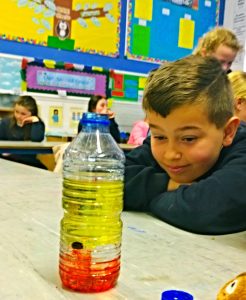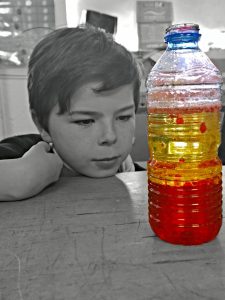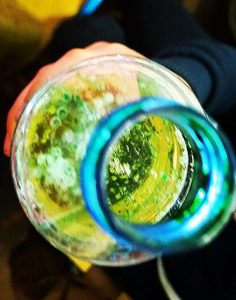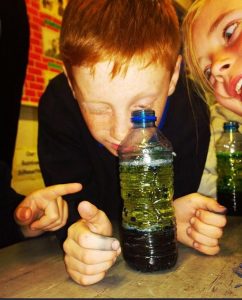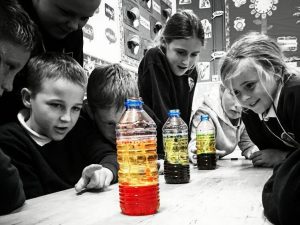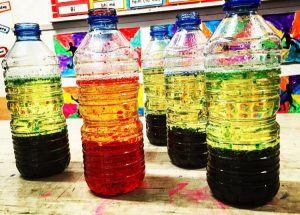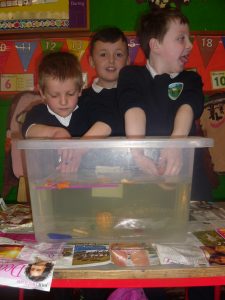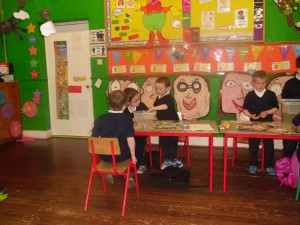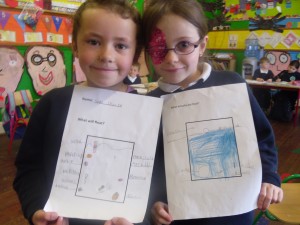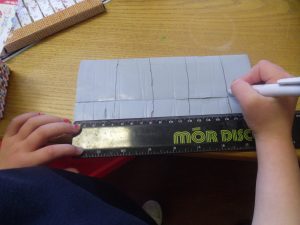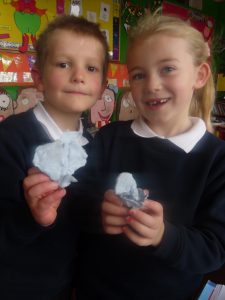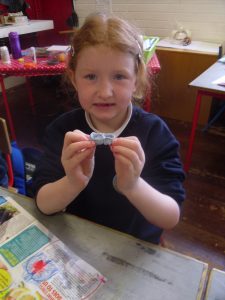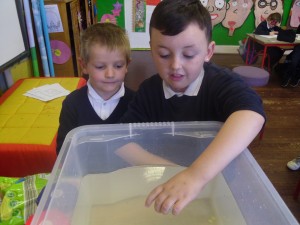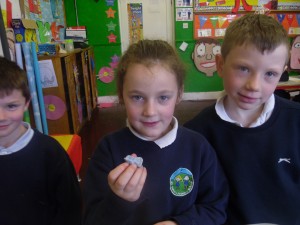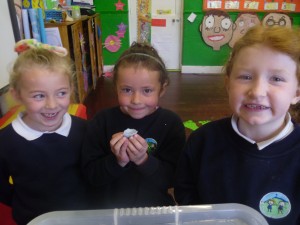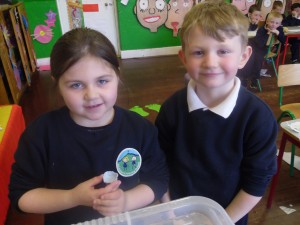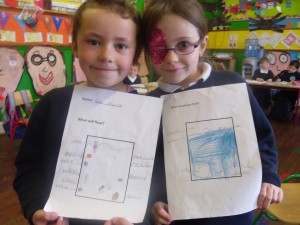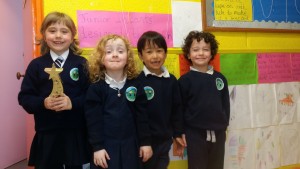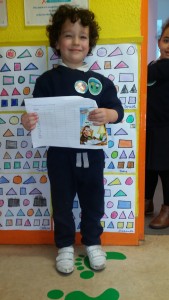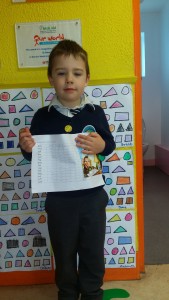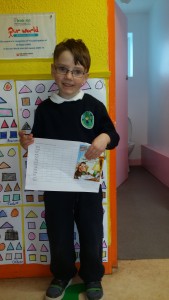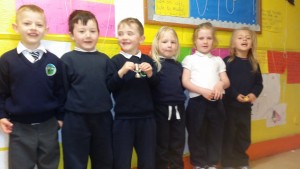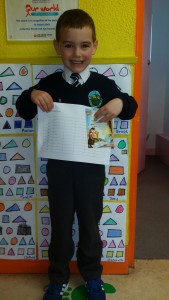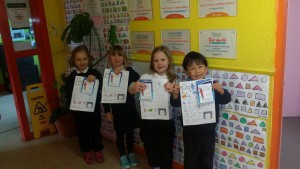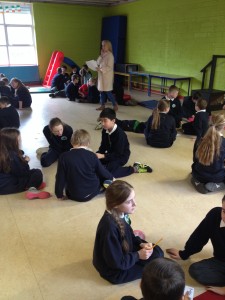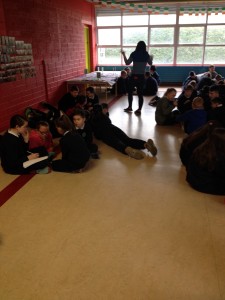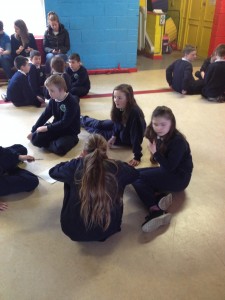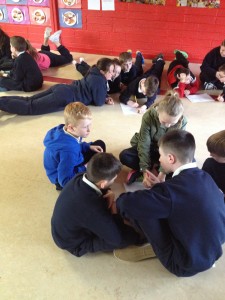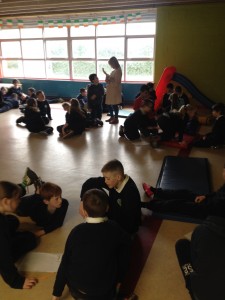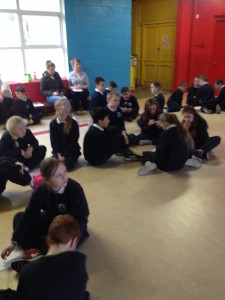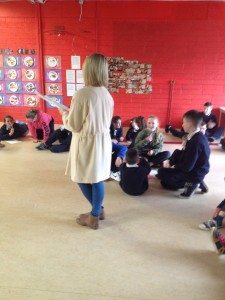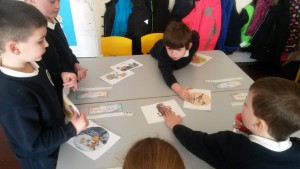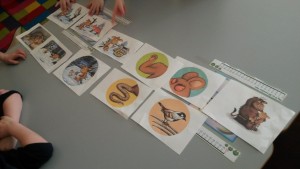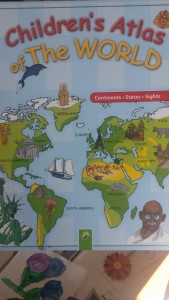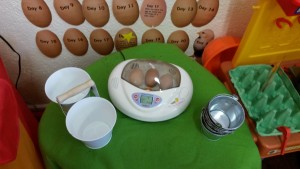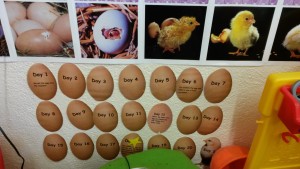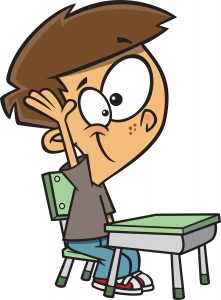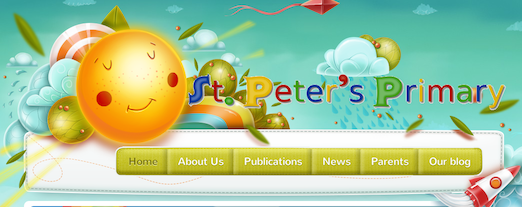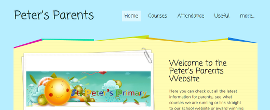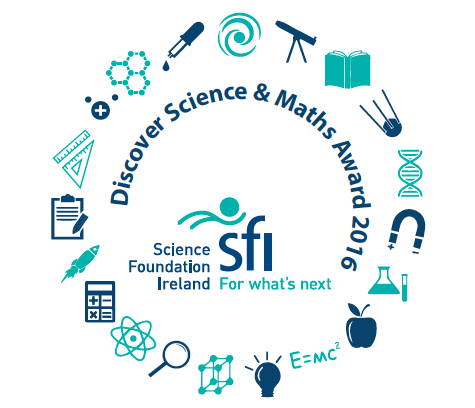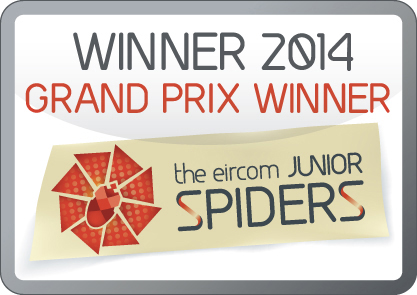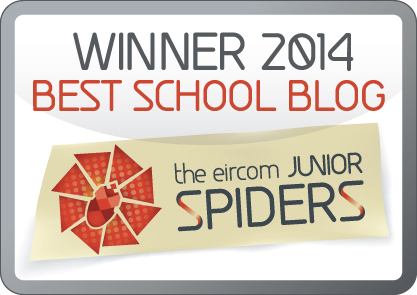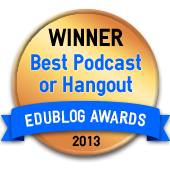Last Tuesday, March 15th, in every school across the country, students are celebrating Proclamation Day as part of the celebrations of the centenary of 1916. In St Peter’s, we had a very special ceremony, where every class was involved, finishing with the raising of the Irish flag that was presented late last year by the members of the Defence Forces. We also displayed artwork in the hall related to our projects on the Easter Rising.
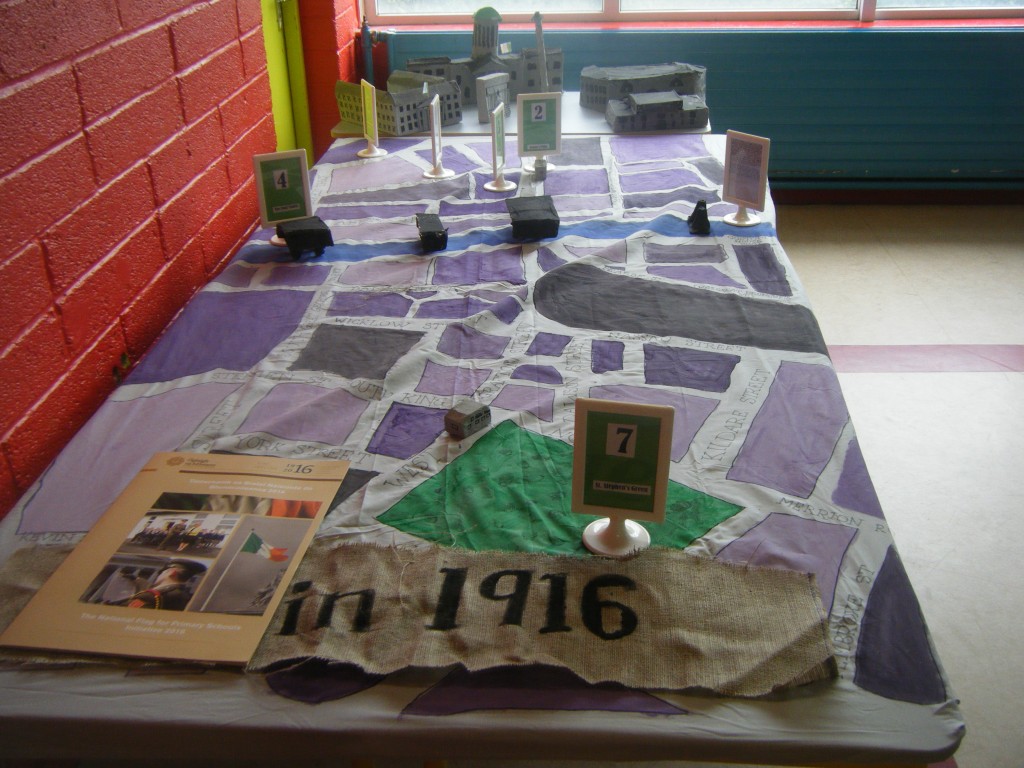
Our ceremony started with an introduction from our principal, Ms. Whyte. Next, Amber from 4th class, Finn and Chris from 5th class and Alex, Alana and Ryan gave us an overview of the Rising.
As part of Proclamation Day, schools were encouraged to create their own proclamations to represent their visions of the future. Kyra and Tiana spoke on behalf of 1st class, Ryan, Dylan M, Brooke, Casey, Codie and Brigid spoke on behalf of 4th class and Amy from 6th class read out her version. The Proclamations focused on the importance of education, of helping to end homelessness, the value of the Irish language and the care that we should give to the environment.
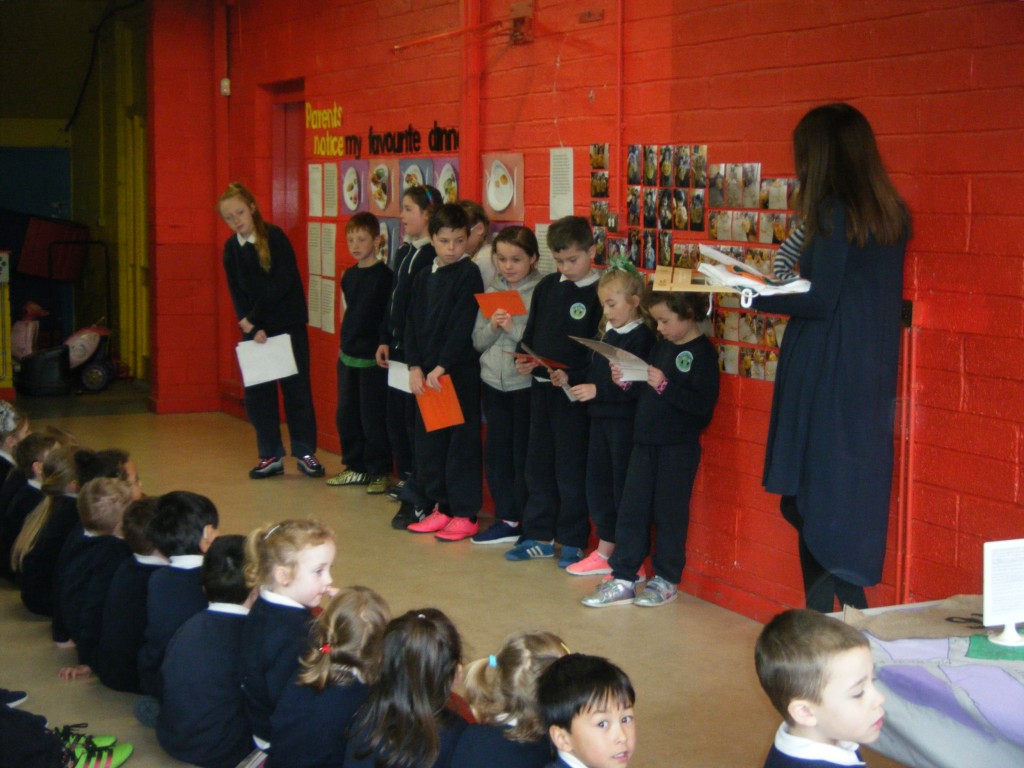
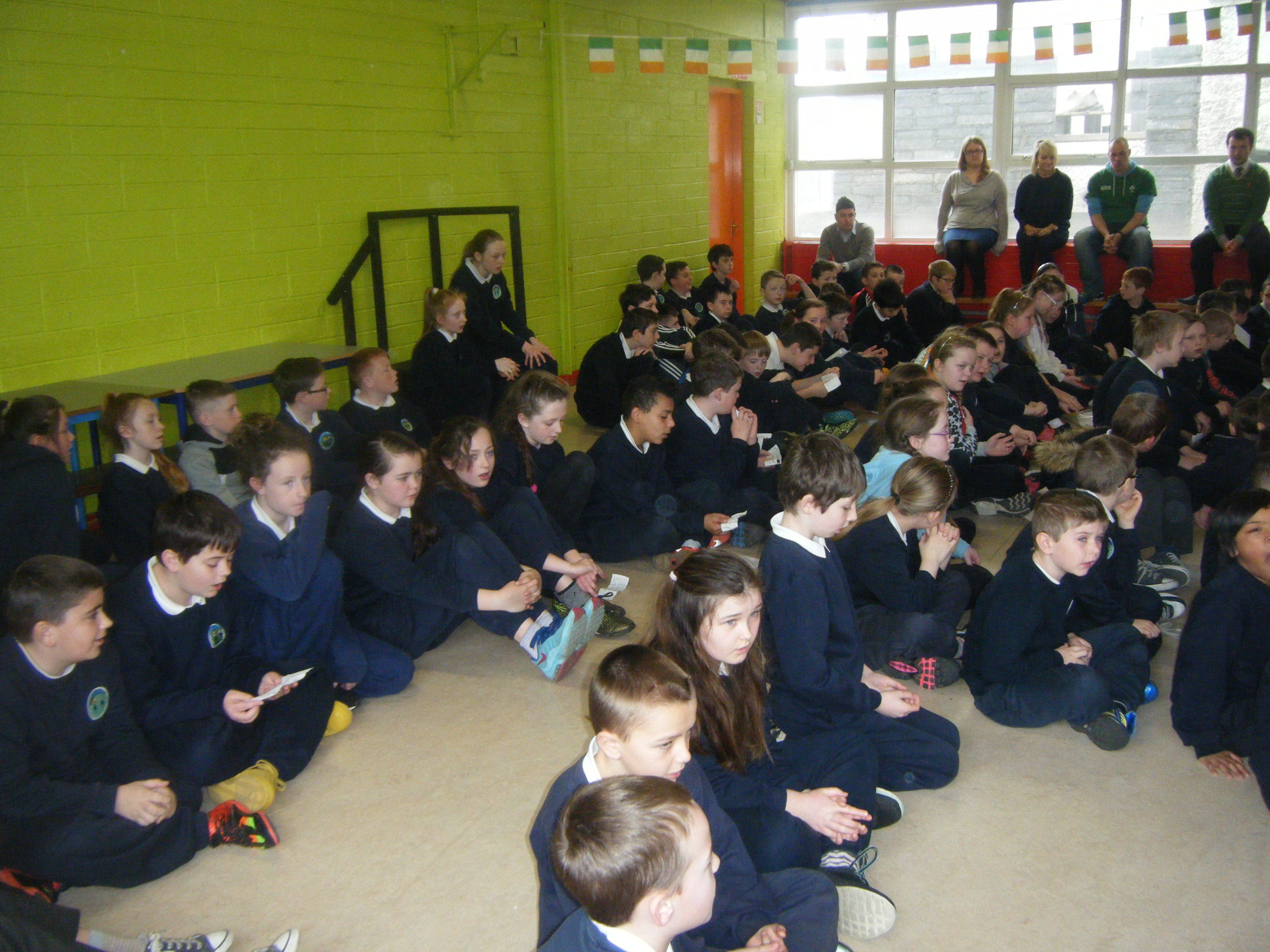
As part of our 1916 celebrations, we read ‘The Young Rebels’ by Morgan Llewelyn. Jamie from 5th and Dylan M from 6th shared information about the book and about the activities we took part in.
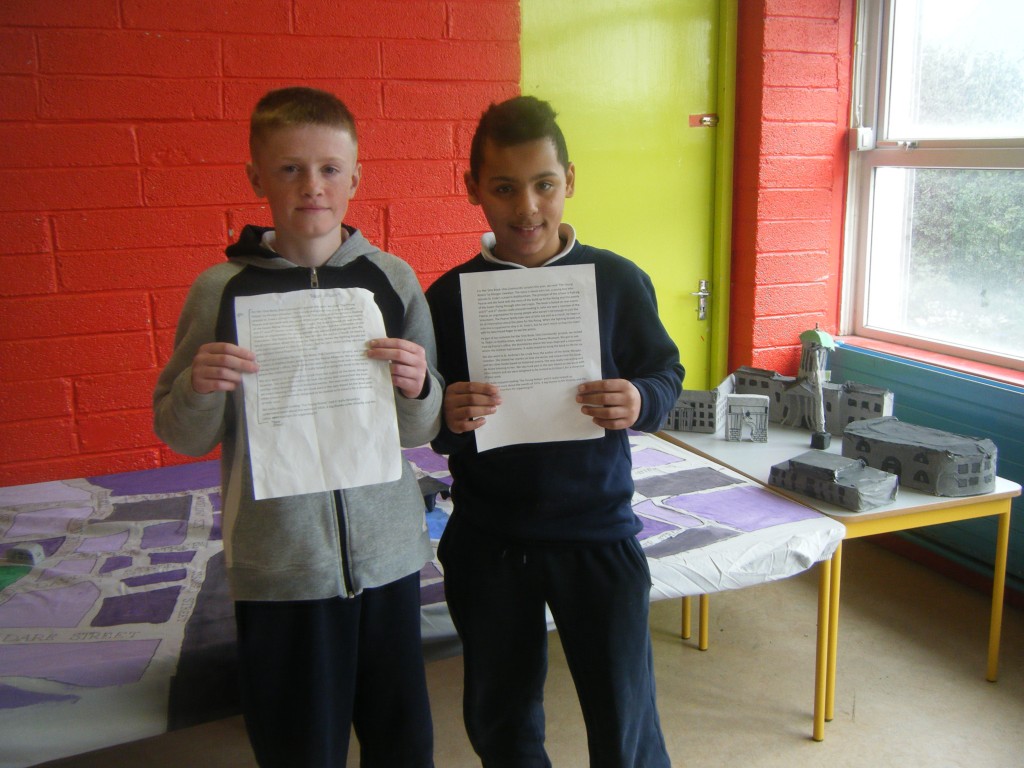
Toby from Senior Infants, Maddy from 3rd class and Lex from 5th are the great-grandchildren of Martin Ryan, who was a teacher in Scoil Éanna and a good friend of Padraig Pearse. He was also involved in the gun-running before the Rising. Toby, Maddy and Lex really impressed 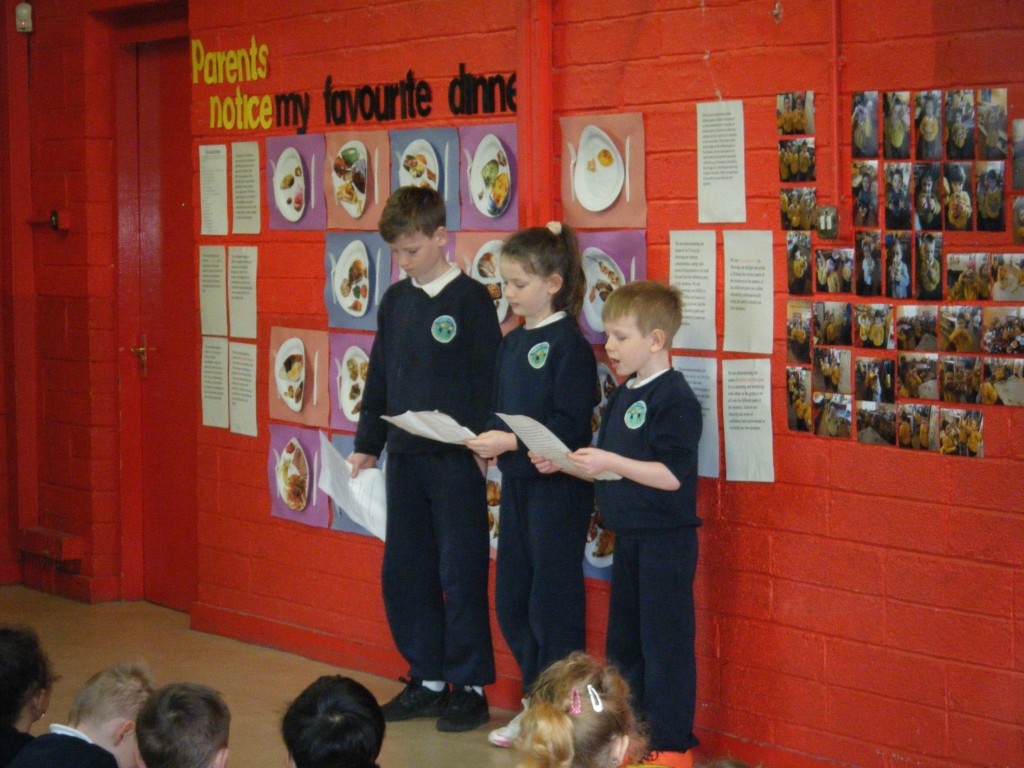
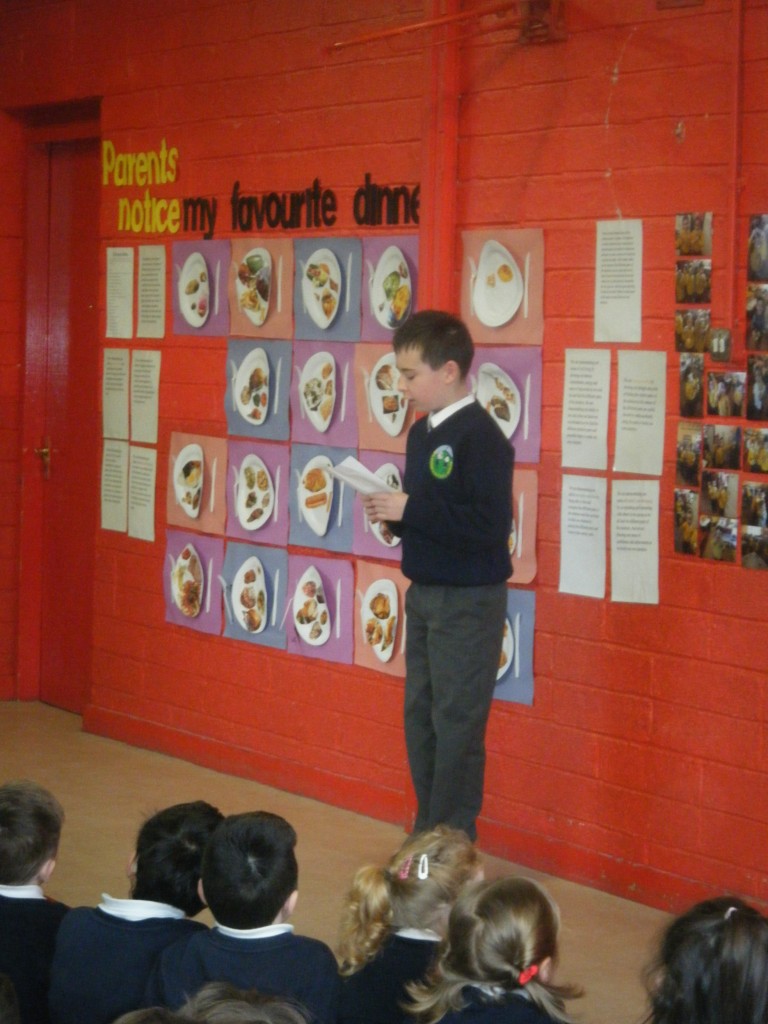
Women played an important part in the Rising. Caoilynn from 4th spoke about Nurse Elizabeth O’Farrell and Lauren from 5th told us about Countess Markievicz. 3rd class told the story of Grace Gifford, who married Joseph Mary Plunkett the night before his execution. 3rd, 4th and 5th then sang the chorus of song ‘Grace’.
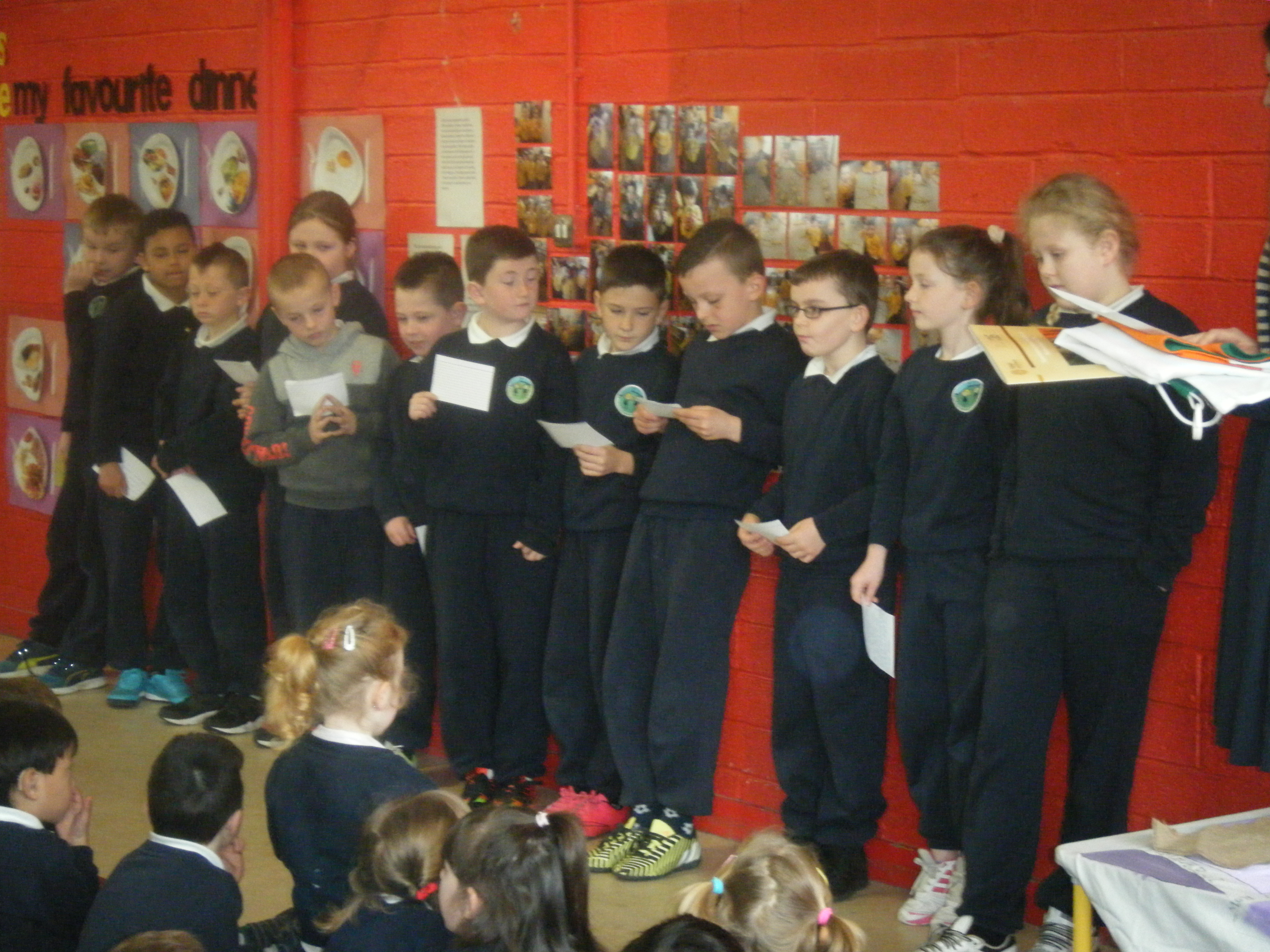
Before raising the flag, five of second class, Amalia, Adem, Tadhg, Ava and Liam, read out facts about the Irish flag.
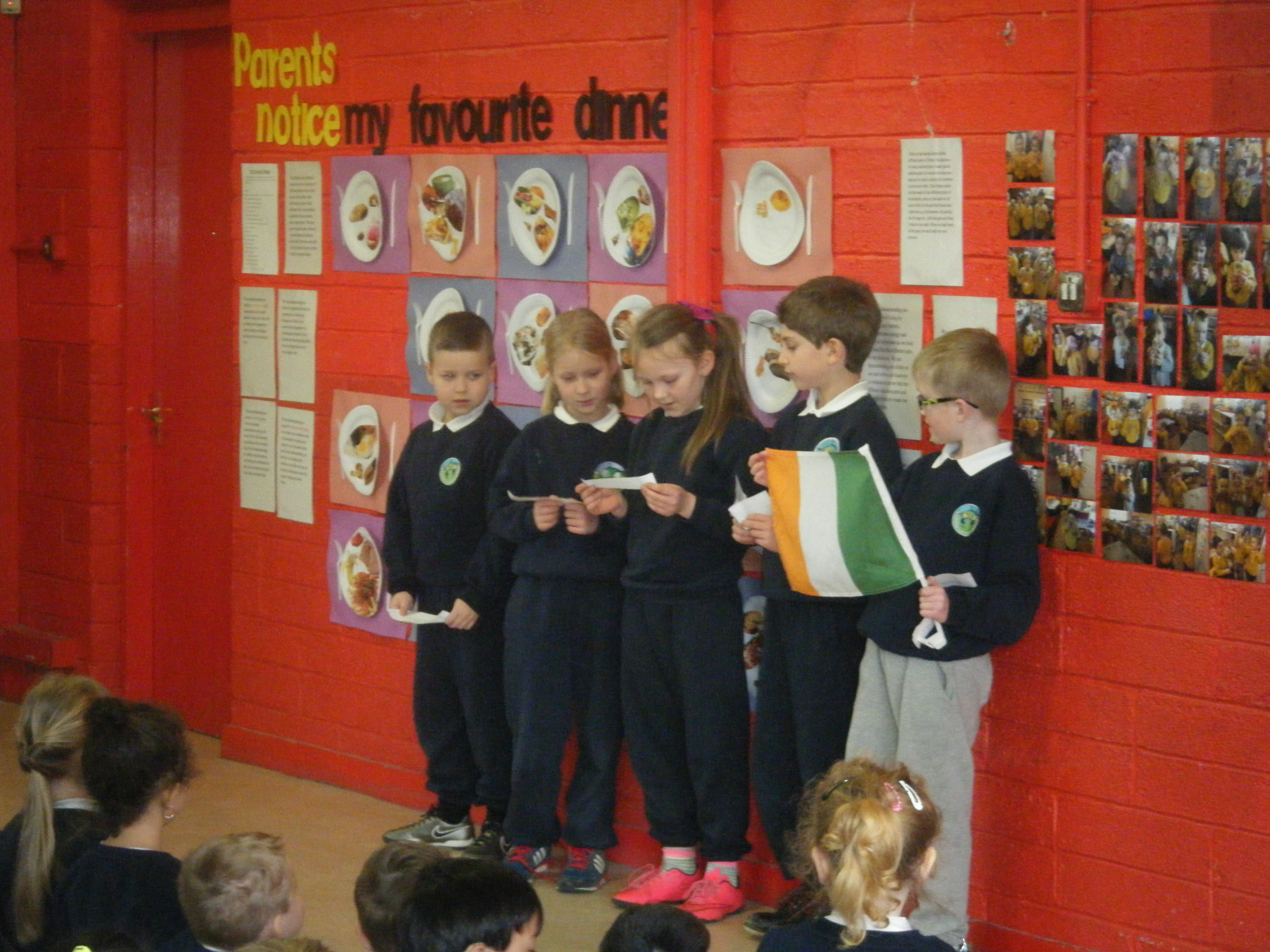
Then, Ms Whyte presented the flag to Brooke and Taylor from Junior Infants who carried it to Patrick and Leanne from 5th class, who raised it as the rest of the school sang ‘Amhrán na bhFiann’.
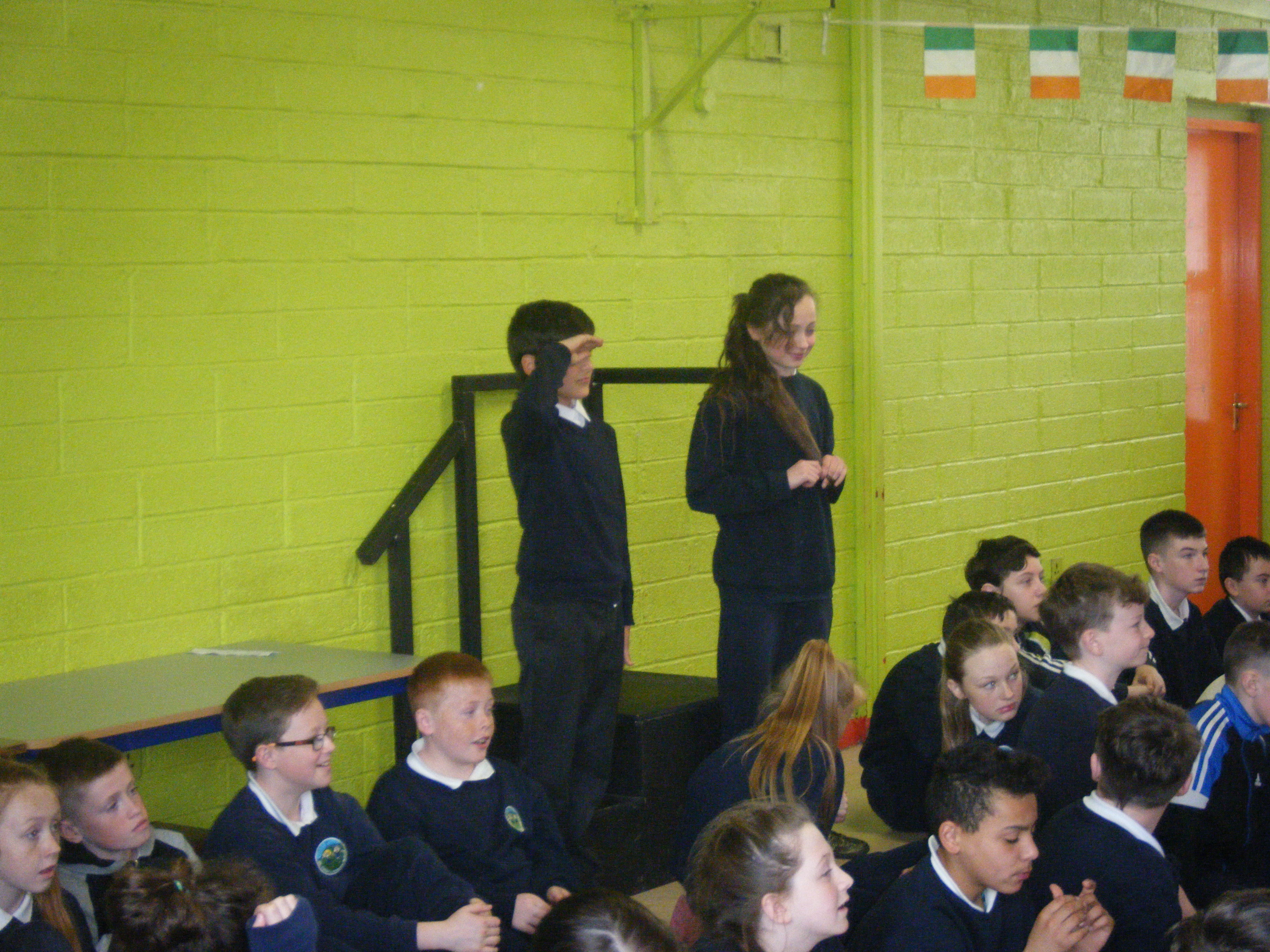
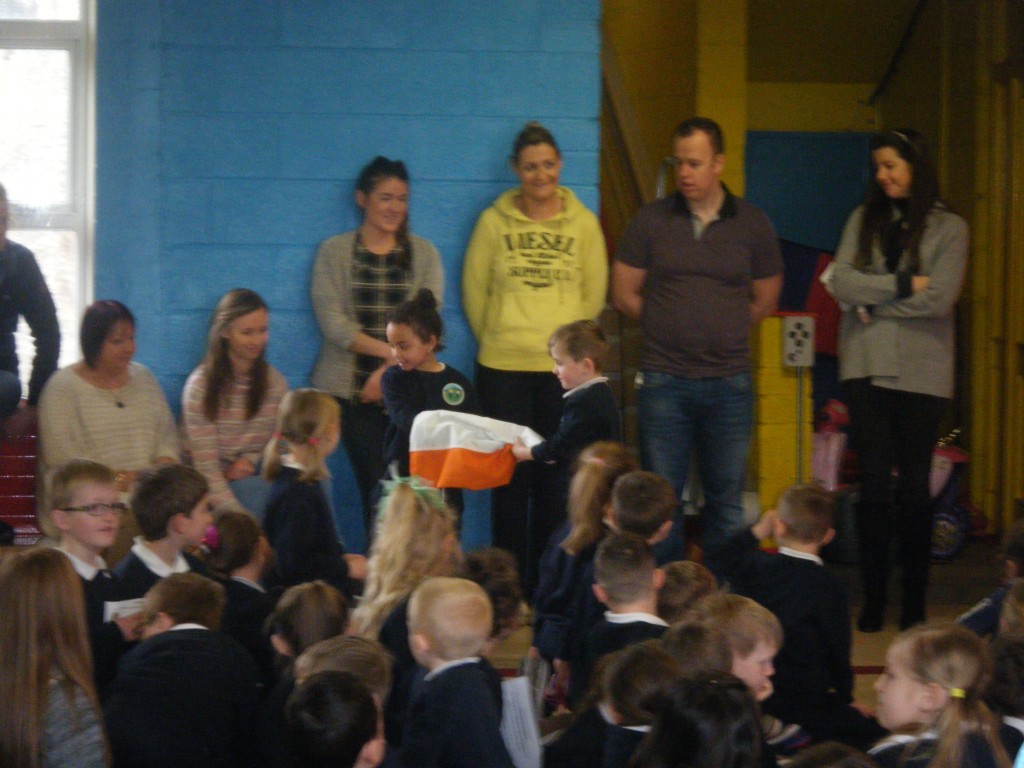
Well done to all the readers and the artists who took part in today’s ceremony. We are all very proud of you!
We made a special recording of the Farrells’ research on their great-grandfather as a record for our students in the future. Well done to Lex, who put a lot of effort into researching his family history and wrote the piece with Ms Sugrue, and to Maddy and Toby for their excellent reading!
Martin Ryan, by the Farrell siblings from St Peter's, Bray on Vimeo.

